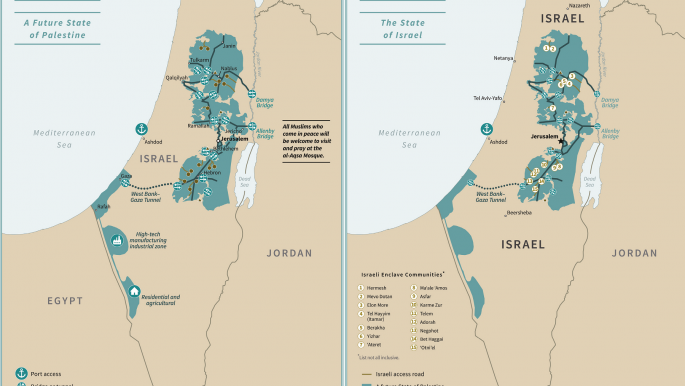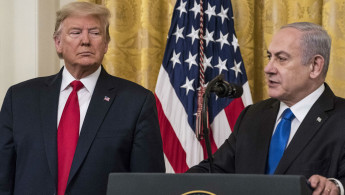Trump unveils controversial map of future Palestinian ‘mini-state’
Conceptual maps included in the long-awaited peace plan, designed to resolve the Israel-Palestine conflict, expose Israel’s mass annexation of Palestinian land while giving the Palestinians limited sovereignty over an alleged “future Palestinian state”.
Meanwhile, Israel is due to remain in control of a unified Jerusalem as its capital, contrary to the demands of the Palestinians.
Trump’s plan also spares Israel’s controversial and illegal settlements in the occupied West Bank, which will remain in place. Around 200,000 Israeli Jews now live in east Jerusalem in settlement homes considered illegal under international law.
The Palestinians have already rejected the proposal, accusing Trump of being biased in favour of Israel as he has adopted policies that bolster Israel at their expense.
Twitter Post
|
Trump, releasing the plan before a strongly pro-Israel audience at the White House with Israeli Prime Minister Benjamin Netanyahu by his side, acknowledged that he has done a lot for Israel, but he said he wanted the deal to be a “great deal for the Palestinians.” Trump said the deal is a "historic opportunity" for Palestinians to achieve an independent state of their own.
The 50-page political outline goes further in concessions to the Palestinians than many analysts had believed was likely. However, it would require them to accept conditions they have been previously unwilling to consider, such as accepting West Bank settlements. It builds on a 30-page economic plan for the West Bank and Gaza that was unveiled last June and which the Palestinians have also rejected,
Under the terms of the “peace vision" that Trump's son-in-law and senior adviser Jared Kushner has been working on for nearly three years, the future Palestinian state would consist of the West Bank and Gaza, connected by a combination of above-ground roads and tunnels.
Netanyahu and his main political challenger in March elections, Benny Gantz, had signed off on the plan.





 Follow the Middle East's top stories in English at The New Arab on Google News
Follow the Middle East's top stories in English at The New Arab on Google News


